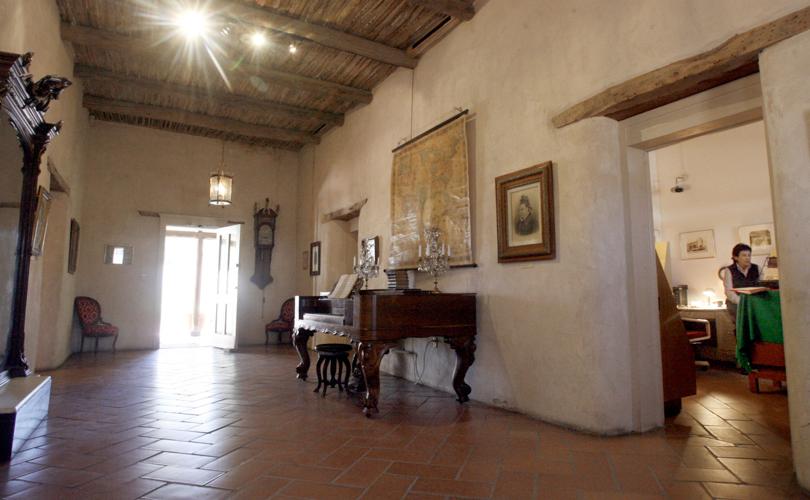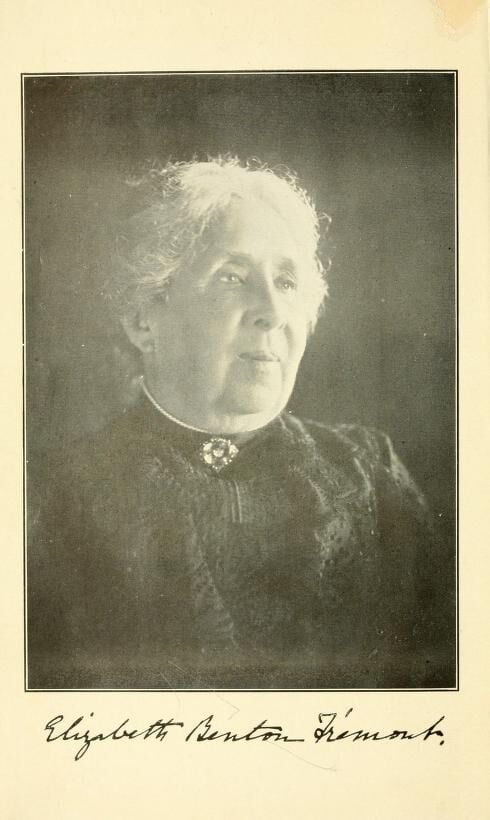Elizabeth “Lily” Benton Frémont was born on Nov. 15, 1842, in Washington, D.C., the oldest child of John Charles and Jessie Frémont. Much has been written about her parents, particularly her father, who, along with his famed explorations of the West, and a failed attempt to become president of the United States, served as Arizona’s fifth territorial governor. At the time of his appointment, the family was living in New York. They started the lengthy journey across the country to Prescott, then capital of Arizona, arriving in October 1878.
Lily was already a seasoned traveler, having made two trips to California with her parents before the age of 9. In 1852, the Frémonts sailed out of San Francisco for Europe. Five years later, Lily was in Paris. Never marrying, she lived with her parents her entire life.
While living in Prescott, her mother was often ill and finally returned east, leaving Lily to attend the duties that fell to a governor’s wife. She left a diary of the daily activities surrounding her time in both Prescott and a short stay in Tucson in 1881. She also published a portion of her recollections in 1912, detailing their travels from New York to Arizona — the stage stops along the way and the fascinating individuals they encountered.
In September 1878, the Frémonts — James and Jessie, Lily, her younger brother Frank (1855-1931), and Mary the maid, started their journey aboard a train out of New York bound for Chicago. Another brother, Charles (1851-1911), remained in New York.

John C. Frémont, the fifth territorial governor.
After spending several days in Chicago, the entourage headed for Omaha, where they visited with friends. From Omaha, the rail line made its way to San Francisco, then on to Los Angeles. While in California, they hired a Chinese cook to take with them to Prescott.
Their last train ride ended at Yuma. Prescott was still over 200 miles away and the only way to get there was by horse, wagon, or on foot.
“Sunday morning at nine we started in three ambulances,” Lily wrote, “each drawn by six fine mules in good travelling condition. Father, Mother & I, with Mary, had the inside of the leading ambulance.”
They spent their first night on the road at the old mining camp of Castle Dome (now a ghost town).
“Early in the evening,” Lily wrote, “we found the softest places in the sand and there spread our blanket. Mother slept on the ambulance cushions, as became her custom, and thus enjoyed the one luxury of the trip. Father and the men slept outside the tent which was reserved for mother and me. Dust storms were all too frequent, which, coupled with the hard beds, added no peace to the rest.”
The second day on the trail, Lily marveled at the variety of cactus they passed, but the road “was very rough from the number of deep, narrow arroyos to be crossed,” she complained. “We wound in & out amongst stony hills until we reached the amphitheatre shaped end of the canon & there camped amongst cacti & stones with barely enough brush wood for our camp fire, but with plenty of water for the tired mules — for they had had a hard day’s pull — & for cooking.”
“The third night out we camped at Horse Tanks (near what is now Kofa National Wildlife Refuge) where cactus and stones were plentiful, but where there was scarcely sufficient brushwood for the camp fires. There was plenty of water, however, the place taking its name from three basins of graded size, which were hollowed by natural forces out of the natural rocks.”
On to Water Hole, which Lily described as “decidedly wild country, and yet we pitched our tents and went to sleep without even the thought of having a guard.”
They passed by Tyson’s Well that now sits near the town of Quartzsite, before stopping at Desert Station for the night.
“The station master at the place announced that they kept no liquors: ‘The place is too lonesome for drinking,’ he said, which sentence eloquently described the situation.”
At Mesquite Station, Lily “found the best water of the entire route, with a tidy Mexican woman in charge of the adobe house of the burg.”

Lily Frémont briefly lived in this historic Tucson house, the Sosa-Carrillo-Fremont House, in June of 1881.
The next stop was at Fly’s Station, where they enjoyed “a frugal lunch of bread and cheese and we were on the way to Curran’s Station, where we camped for the night. The roadhouse was kept by a Mexican widow whose English husband had recently died leaving three children, the youngest, a tiny baby that was peacefully sleeping in a rude basket cradle which was swung from the ceiling of the Ocatia rafters to keep the child safe from the poisonous insects with which the place abounded.” Lily may have been referring to the ceiling made of ocotillo stalks, a common building technique in the desert.
Their journey almost at an end, the party stopped at Date Creek Station before going on to Kelsey Station where Lily met “a woman, careworn and weary, whose husband kept the station.” The man was a justice of the peace and it was here that her father took the oath of office when then governor, John Philo Hoyt, met them as an escort into Prescott.
“We were nearing civilization even in those days,” Lily wrote, “and at Skull Valley there were plenty of good farms and farm houses.”
A stop at Iron Spring brought them about six miles from Prescott. On Oct. 6, they arrived at their destination.
Lily enjoyed her few years in Prescott but in March 1881, rumors circulated the capital was headed for Tucson. Lily and her father headed down the road to the Old Pueblo, although the capital did not.
While living in Tucson, Lily was stricken with typhoid fever and returned to New York to recuperate.
Lily died in Los Angeles on May 28, 1919. She had very little money after her parents’ deaths, but her recollections of days gone by left her with a lifetime of memories.
This is the third of our history quizzes. How much do you know?






